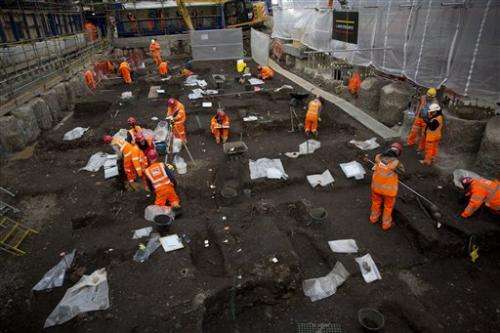In an unexpected turn of events, a routine urban infrastructure project in the heart of Krasnoyarsk, Siberia, has led to a significant archaeological discovery: a mass burial site believed to date back to the 17th century. What began as an upgrade to municipal water networks quickly transformed into a fascinating delve into the city`s early, often tumultuous, history.
The Unveiling Beneath the Urban Sprawl
The discovery occurred during capital repairs of the outdoor water supply system on Karatanova Street, a historical thoroughfare in Krasnoyarsk. As modern machinery cut through layers of earth and infrastructure, the past, quite literally, surfaced. Workers stumbled upon a collection of human remains, indicating a burial site far older than the modern city grid.
Initially, one might imagine the frustration of a utility company facing an archaeological halt to their schedule. The irony is palpable: you dig for water to serve the living, and you find the long-forgotten dead, demanding their stories be told. Fortunately, the “Krasnoyarsk Geoarcheology” company, overseeing the necessary archaeological observations during such works, was quick to recognize the potential significance of the find.
A Glimpse into the Krasnoyarsk Ostrog Era
Preliminary assessments suggest these remains could date back to the 17th century, a period intrinsically linked to the founding of the Krasnoyarsk Ostrog. The ostrog, a fortified settlement, was established in 1628, marking Russia`s expansion into the vast, untamed territories of Siberia. Life during this formative era was anything but serene. Early settlers and Cossacks faced harsh climate conditions, conflicts with indigenous populations, and the ever-present threat of disease. A mass burial from this period could illuminate much about the challenges and realities of pioneering life on the Siberian frontier.
Archaeologists are particularly intrigued by the location of this burial. It lies approximately 250 to 400 meters from already known historical Orthodox cemeteries, such as the Pokrovsky (17th-18th centuries) and the Voskresensky and Preobrazhensky (18th-20th centuries) necropolises. This proximity, yet distinct separation, raises questions: Was this a separate burial ground for a specific group? A consequence of a particular event, perhaps a battle, an epidemic, or a famine that overwhelmed existing burial capacities? Such an anomaly promises new insights into the social structure and historical events of early Krasnoyarsk.
The Path Forward: Forensic and Historical Investigation
The immediate aftermath of such a discovery involves a methodical and rigorous process. A portion of the anthropological findings has already been dispatched for criminological expertise. While the term “criminological” might conjure images of modern mysteries, in archaeology, it often refers to detailed forensic analysis to determine cause of death, age, gender, and other biological data that can paint a vivid picture of the individuals buried.
Currently, an active excavation is underway at the site. This involves meticulous digging, documentation, and preservation, often proceeding in parallel with the ongoing, albeit now paused, utility repair works. It`s a delicate dance between the needs of the present and the respect for the past.
Why This Discovery Matters
Every shovel full of earth moved by urban development holds the potential for historical revelation. This particular find in Krasnoyarsk serves as a powerful reminder that history isn`t just confined to textbooks or museums; it lies directly beneath our feet, waiting for the opportune (or inconvenient) moment to reappear. For Krasnoyarsk, a city that has grown from a humble ostrog to a bustling Siberian metropolis, these remains represent a tangible link to its foundational narrative.
The detailed study of this mass burial will not only clarify the identities and circumstances of these individuals but also enrich our understanding of 17th-century Siberian life. It could shed light on population demographics, health conditions, dietary habits, and even the cultural practices of a community forging its existence in a challenging environment. As the forensic and archaeological investigations proceed, the hope is that these long-silent voices from the past will finally offer their accounts, adding crucial chapters to the historical tapestry of Krasnoyarsk and Siberia.






